"METERS"
After some (long) time and some client work I finally got around doing another spare time project.
Idea:
This time I was inspired by old analog measuring tech. So I decided to design and built some retro radio equipment. At least sort of, as I am not really sure what it does besides looking like what I had in mind.
Process:
So the fist thing I modeled was the DIN Analog Panel Meter you see in the VF-PWR 220 E (bottom right) and the project grew from there. I oriented myself towards military tech to built a housing for the meters. Then I thought an Oscilloscope might be a nice fit for the setup. So I constructed the panel and buttons as well as the small CRT screen for it. Last but mot least I was inspired by some old radio tech so I built in a smaller form-factor radio transceiver.
Procedural Materials:
The materials are all rather procedural this time. As I was going back and forth quite a bit with the placement of the dials, buttons and knobs I wanted to stay flexible. So no substance this time. I created huge node trees that, mostly with the help of the "Dirt" node, produced procedural scratches, roughness variation and well... dirt effects on the materials.
Advantage:
As I stated before with this workflow you are really flexible. Your materials adapt to your changes in realtime. Also no need for UVs on most of the geometry.
Disadvantage:
Huge shader trees and especially the dirt nodes add some extra render time as those huge junks of nodes have to be computed. Also the shaders are quite fragile mainly and due to the procedural nature more likely to beak then some "baked" textures. Also the node setup is huge and after some time I will definitely forget what certain nodes are there fore.
Credits:
Ulf Ohnesorge, for detailed constructive criticism and suggestions for improvement.
Tech Specs:
Modeled in Maxon C4D R19 (Due to bugs that make modeling in R20 really tedious)
Textured and shaded and rendered in Otoy Octane Render V 4.02.1 R3
Rendered in 4K 3840 X 2160 px.
Render time was around 10 - 13 min on 8 GPU´s (5 X GTX 1080Ti, 3 X GTX 980Ti)
2 Light sources (HDRI + 1 accent lights)
Diffuse Depth 16
Glossy Depth 16
As always I hope you like my work. Thank you for your time.
After some (long) time and some client work I finally got around doing another spare time project.
Idea:
This time I was inspired by old analog measuring tech. So I decided to design and built some retro radio equipment. At least sort of, as I am not really sure what it does besides looking like what I had in mind.
Process:
So the fist thing I modeled was the DIN Analog Panel Meter you see in the VF-PWR 220 E (bottom right) and the project grew from there. I oriented myself towards military tech to built a housing for the meters. Then I thought an Oscilloscope might be a nice fit for the setup. So I constructed the panel and buttons as well as the small CRT screen for it. Last but mot least I was inspired by some old radio tech so I built in a smaller form-factor radio transceiver.
Procedural Materials:
The materials are all rather procedural this time. As I was going back and forth quite a bit with the placement of the dials, buttons and knobs I wanted to stay flexible. So no substance this time. I created huge node trees that, mostly with the help of the "Dirt" node, produced procedural scratches, roughness variation and well... dirt effects on the materials.
Advantage:
As I stated before with this workflow you are really flexible. Your materials adapt to your changes in realtime. Also no need for UVs on most of the geometry.
Disadvantage:
Huge shader trees and especially the dirt nodes add some extra render time as those huge junks of nodes have to be computed. Also the shaders are quite fragile mainly and due to the procedural nature more likely to beak then some "baked" textures. Also the node setup is huge and after some time I will definitely forget what certain nodes are there fore.
Credits:
Ulf Ohnesorge, for detailed constructive criticism and suggestions for improvement.
Maxime Roz, for his interior HDRI sets.
Tech Specs:
Modeled in Maxon C4D R19 (Due to bugs that make modeling in R20 really tedious)
Textured and shaded and rendered in Otoy Octane Render V 4.02.1 R3
Rendered in 4K 3840 X 2160 px.
Render time was around 10 - 13 min on 8 GPU´s (5 X GTX 1080Ti, 3 X GTX 980Ti)
2 Light sources (HDRI + 1 accent lights)
Diffuse Depth 16
Glossy Depth 16
As always I hope you like my work. Thank you for your time.
METERS A

METERS B
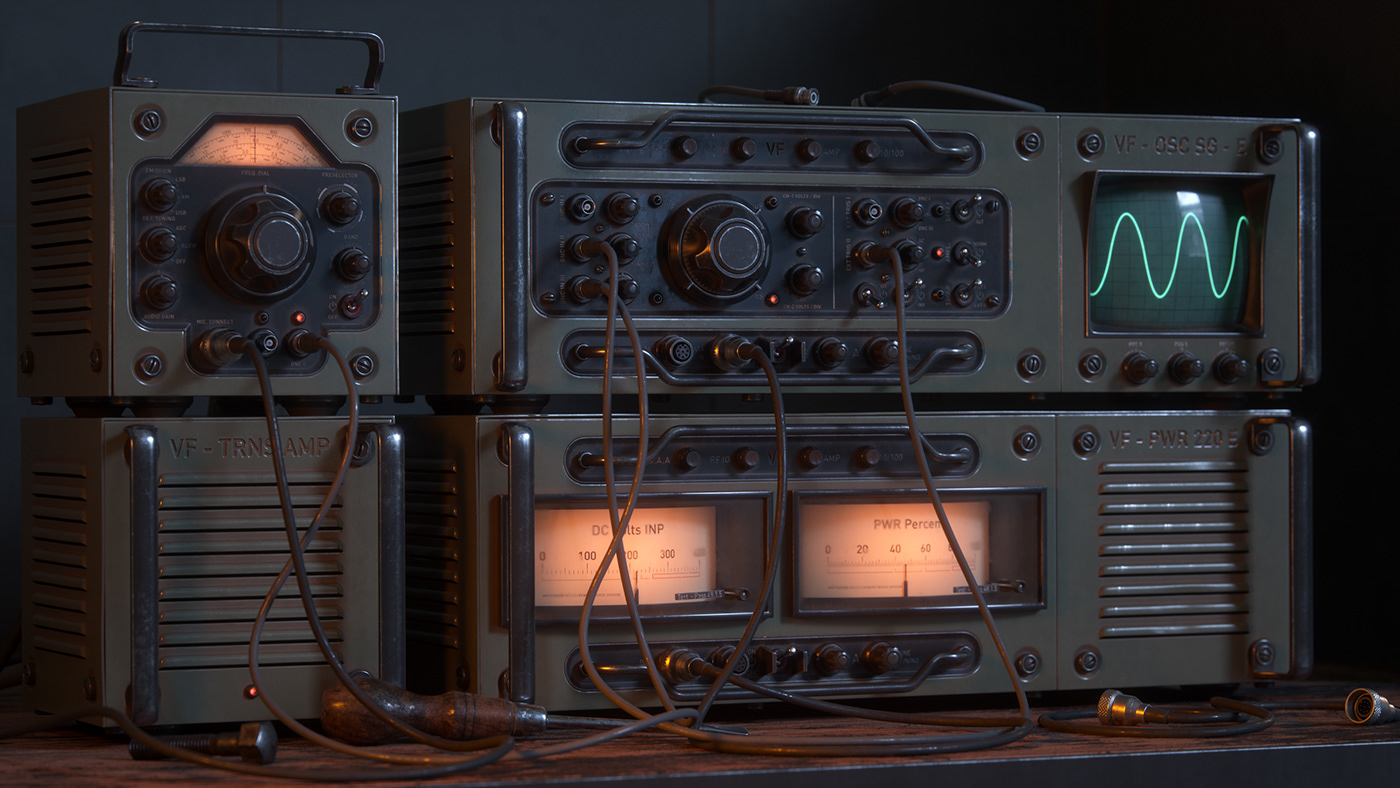
METERS C
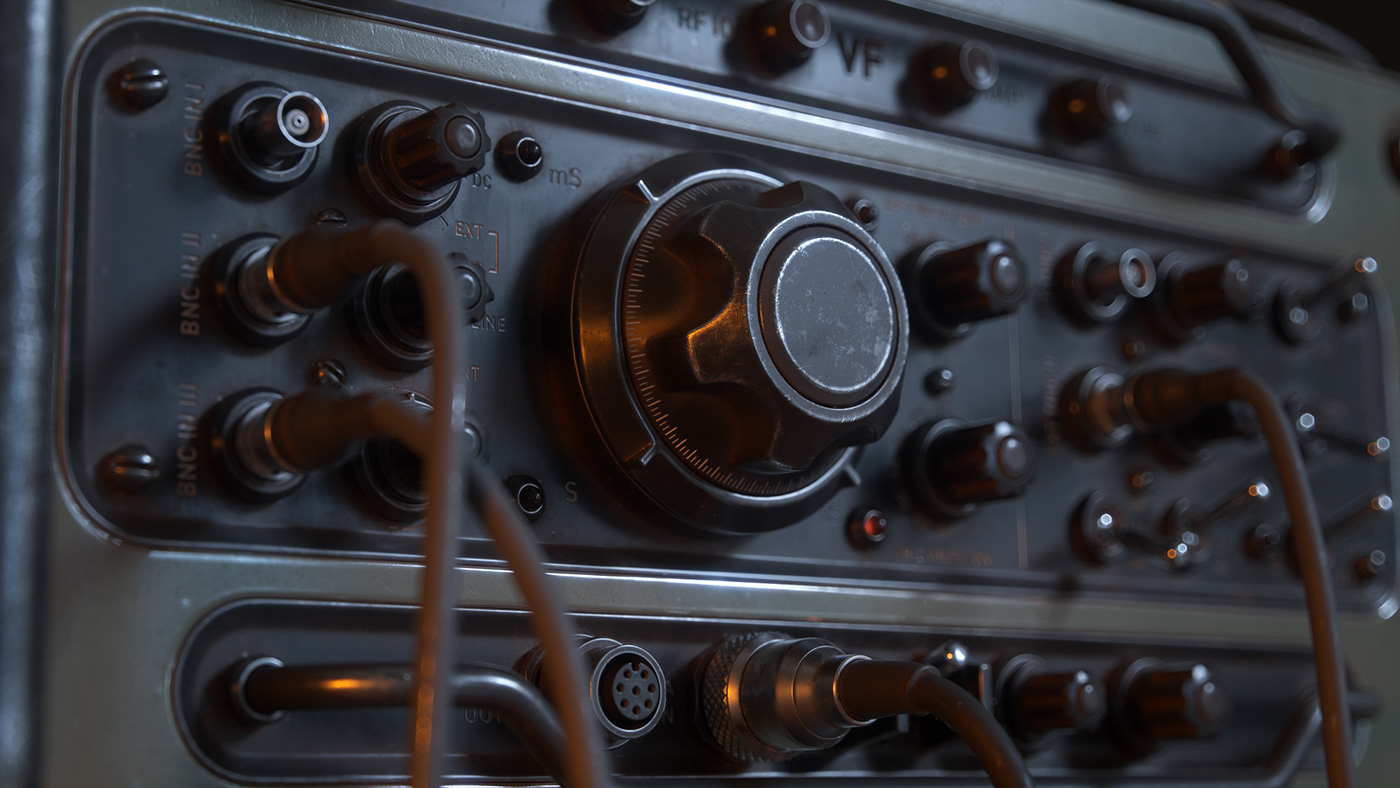
METERS D
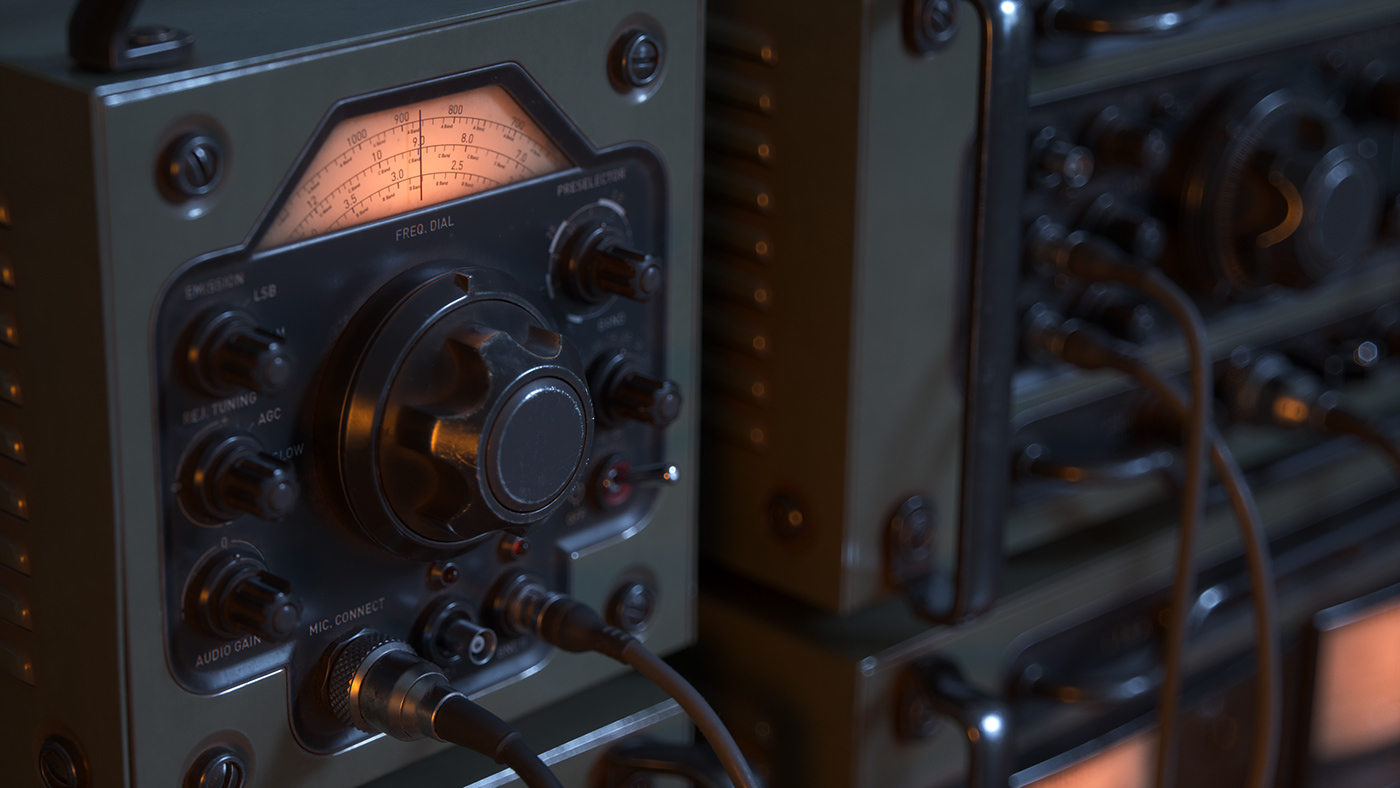
LIGHT SOURCES
The lighting is really simple. I am a fan of the "less is more" philosophy. So whenever I can, I make my lighting as simple as possible. This time the lighting just consists of one of Maxime Rozes HDRIs and one orange / red accent light.
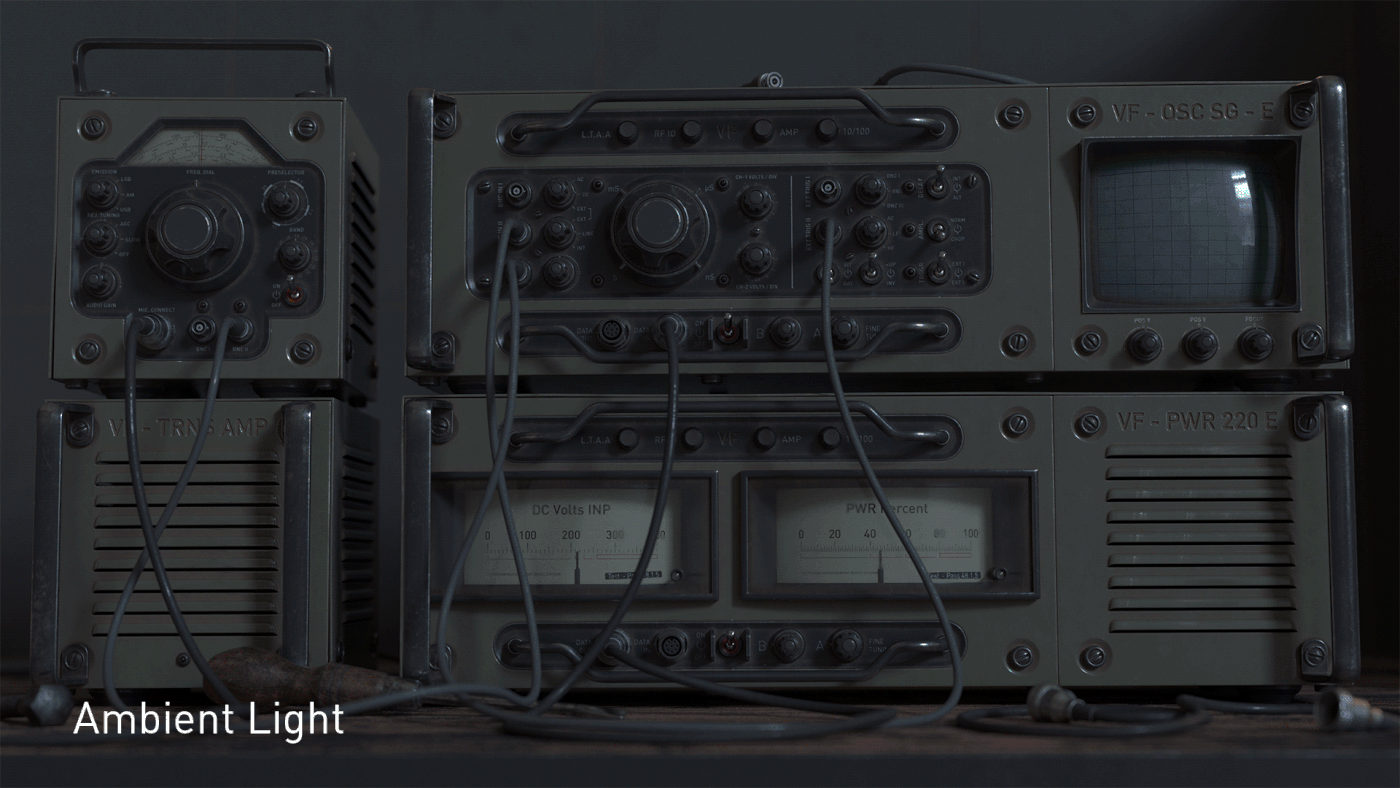
LIGHTING & COMP
I cheated a bit and added another light only visible by the reflection to ad a bit more depth / dimension to the render. I used the new light linking feature of Octane 4 to exclude the light from the oscilloscope screen.
All the other lights are practical (Meters, Oscilloscope and Light Diodes)
All the other lights are practical (Meters, Oscilloscope and Light Diodes)

METERS CLAY A
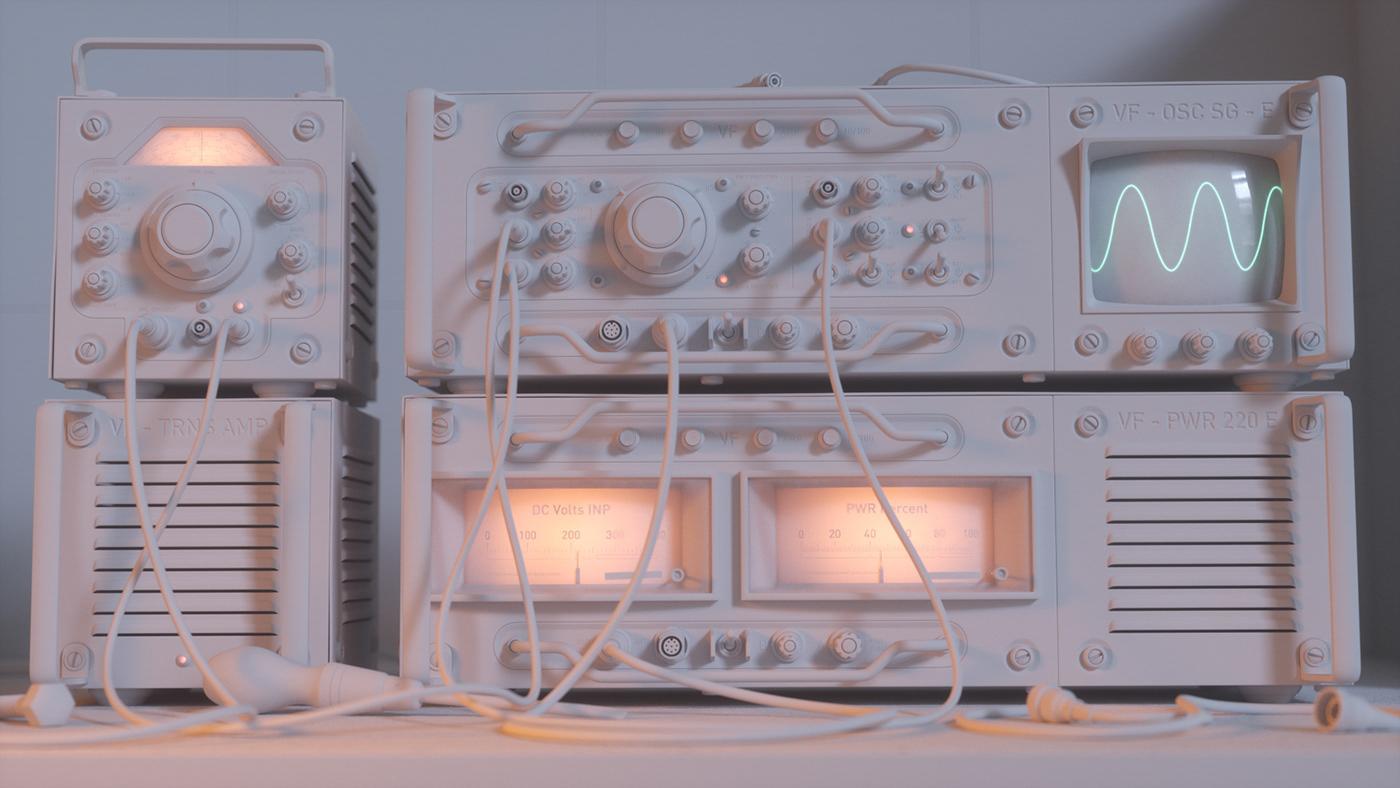
METERS CLAY B
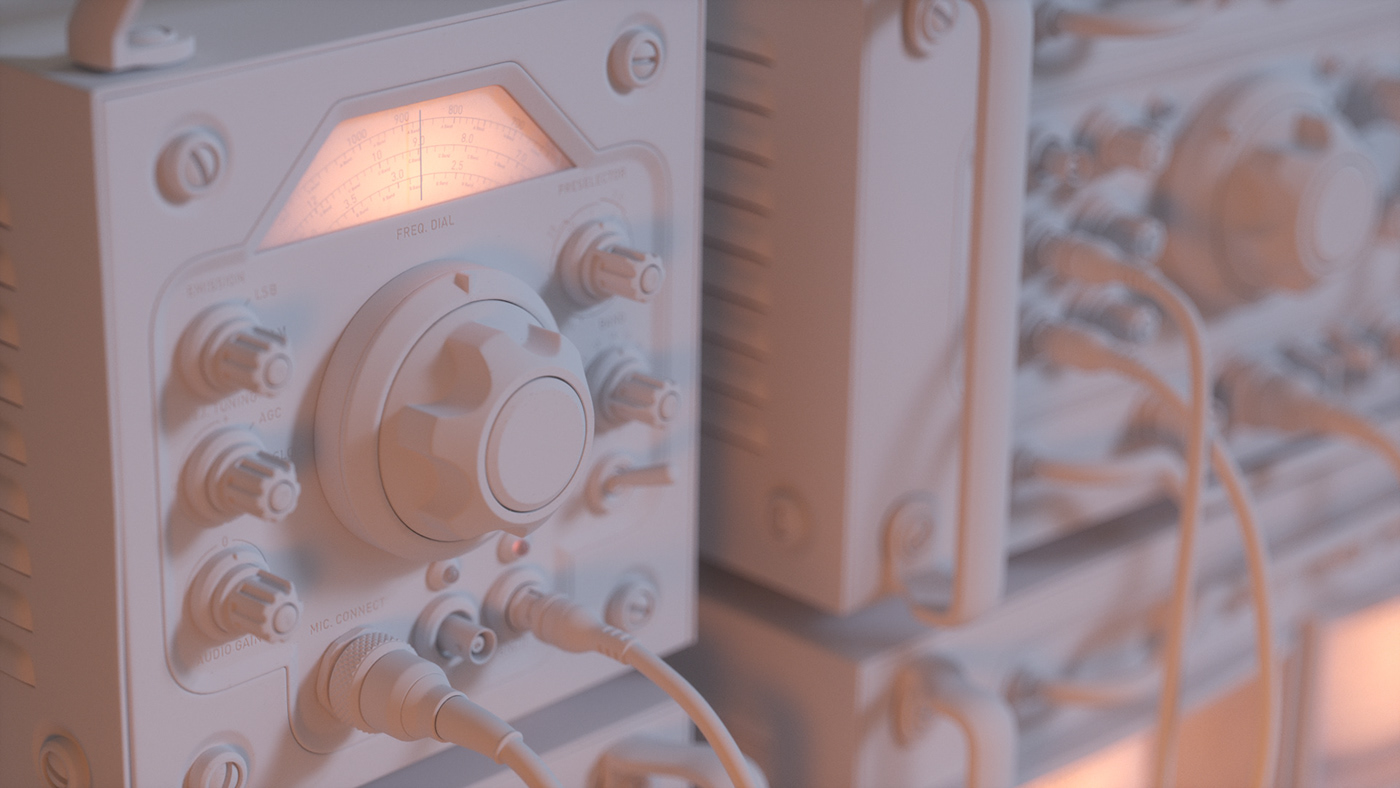
PLUGS:
For some reason (probably just to ease my mind) I wanted to make the plugs behave as life like as possible. So I modeled the female and male counterparts so they would fit perfectly (like in reality)
BNC PLUG
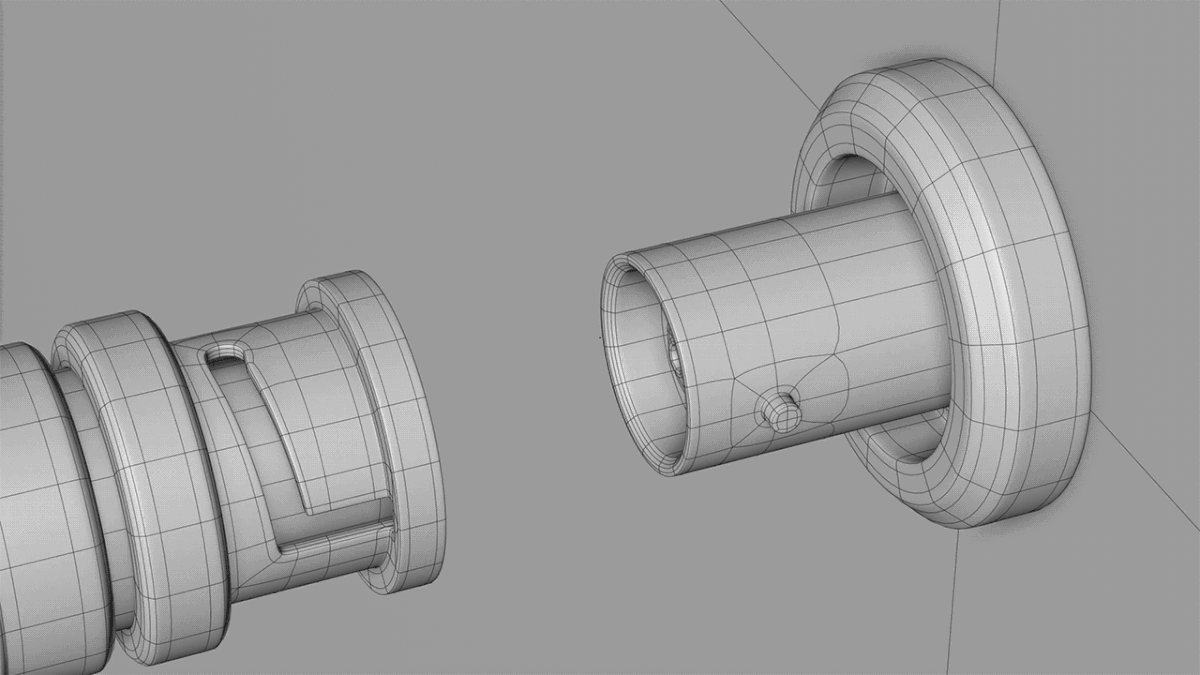
POLE CONNECTOR PLUG
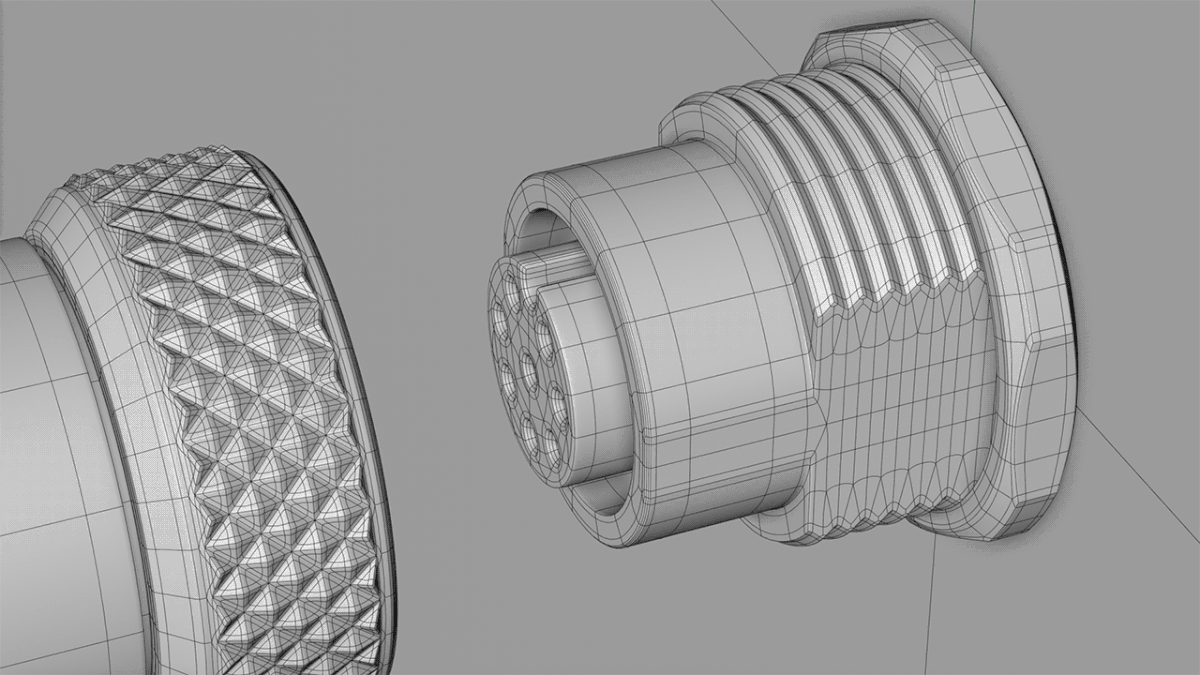
2D Designs
Of course a bit of 2D design is necessary to make all the labels, texts and meters look authentic.
Therefore I have created some layouts in Illustrator that I converted to bitmap textures using Photoshop.
Therefore I have created some layouts in Illustrator that I converted to bitmap textures using Photoshop.
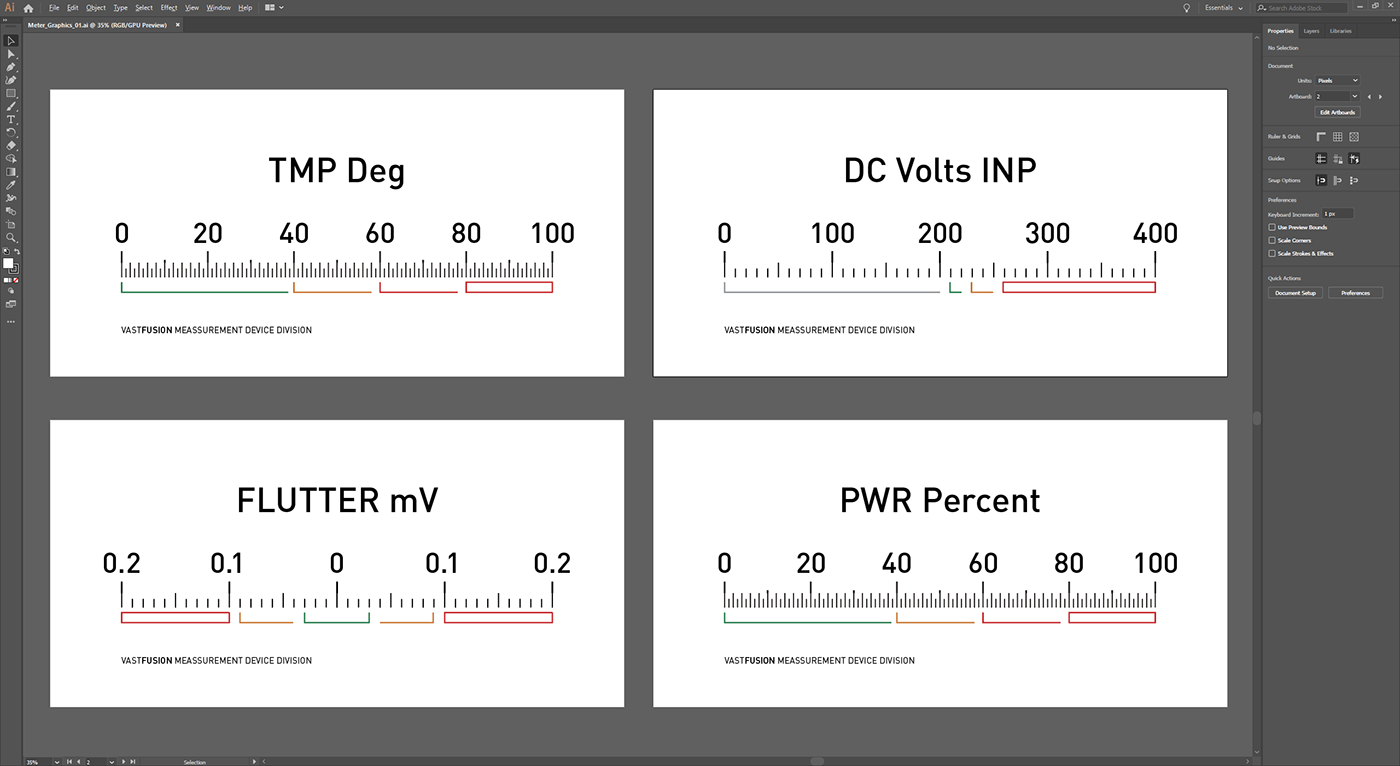

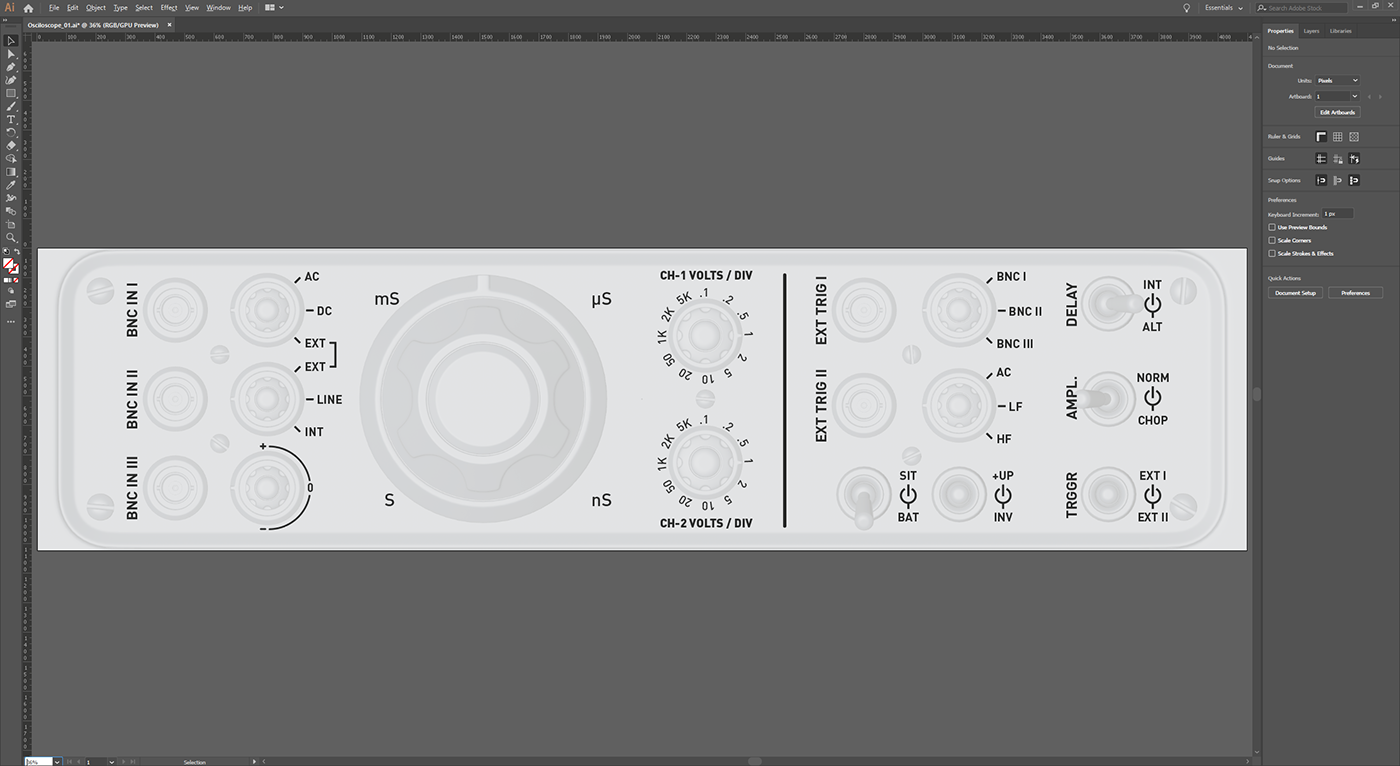
METERS WIRE 1
All was modeled using Subdivision Surface techniques. Though I have to say there are a couple of tris and one or two n-gons in the mesh, most of it consists of nice quads.
Since a lot of objects are repetitive I heavily relied on render instances. Those are really nice to save some video-ram and also scene loading times as well as increasing viewport performance.
Since a lot of objects are repetitive I heavily relied on render instances. Those are really nice to save some video-ram and also scene loading times as well as increasing viewport performance.
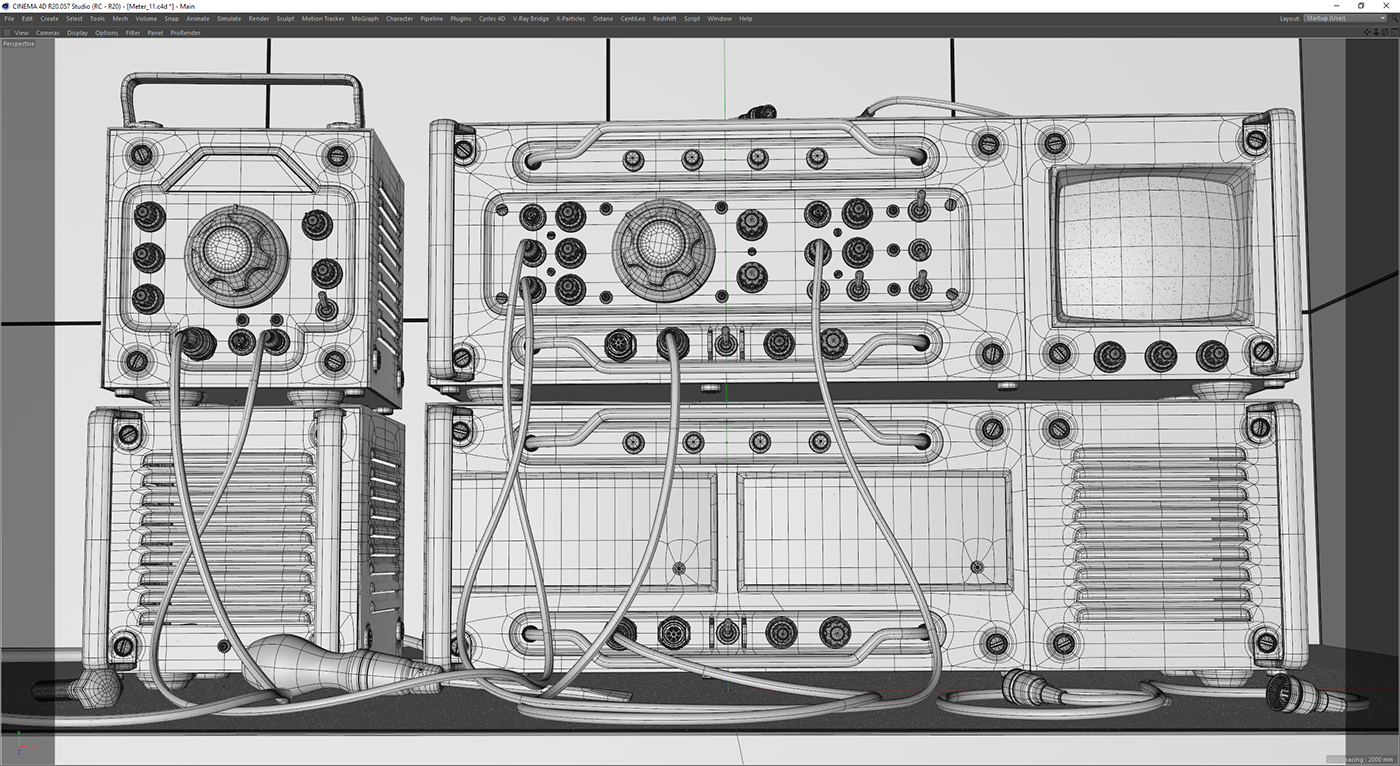
METERS WIRE 02
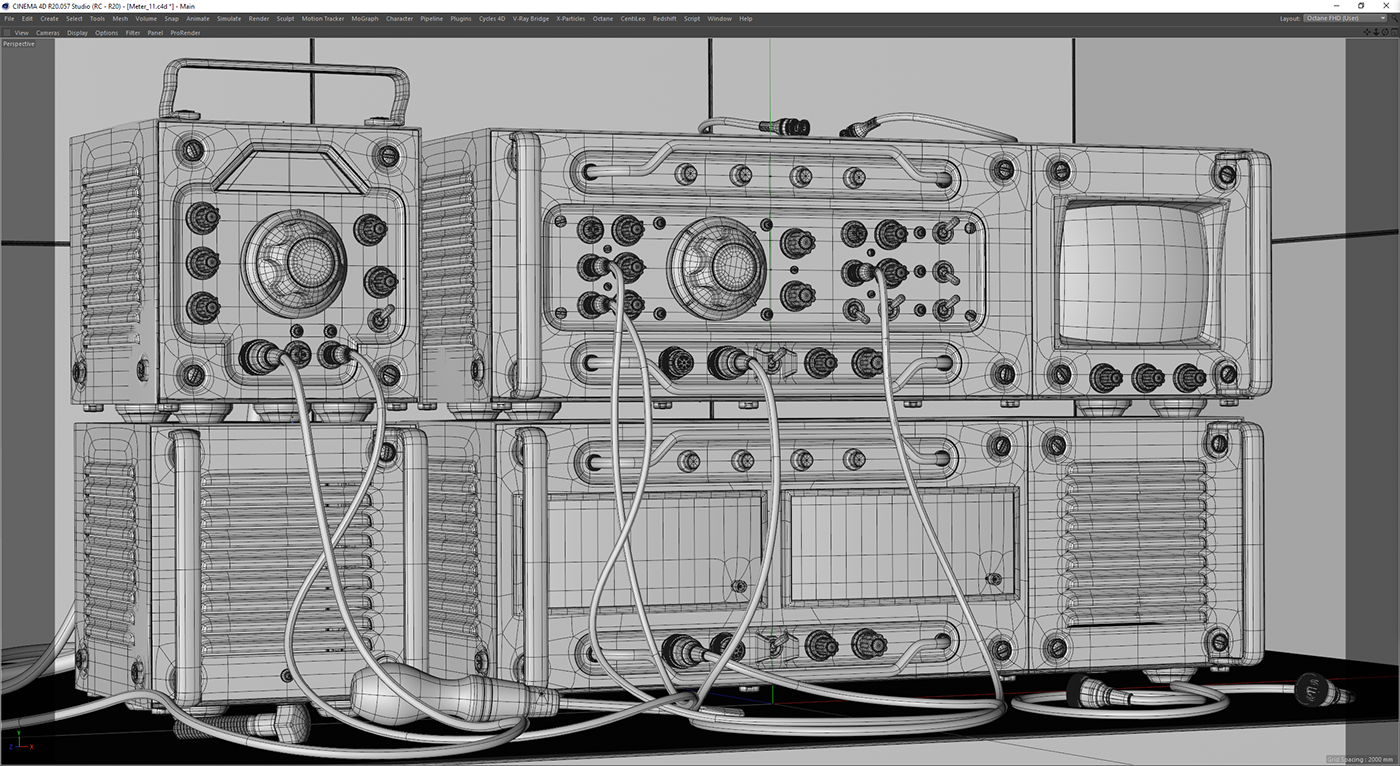
METERS WIRE 3
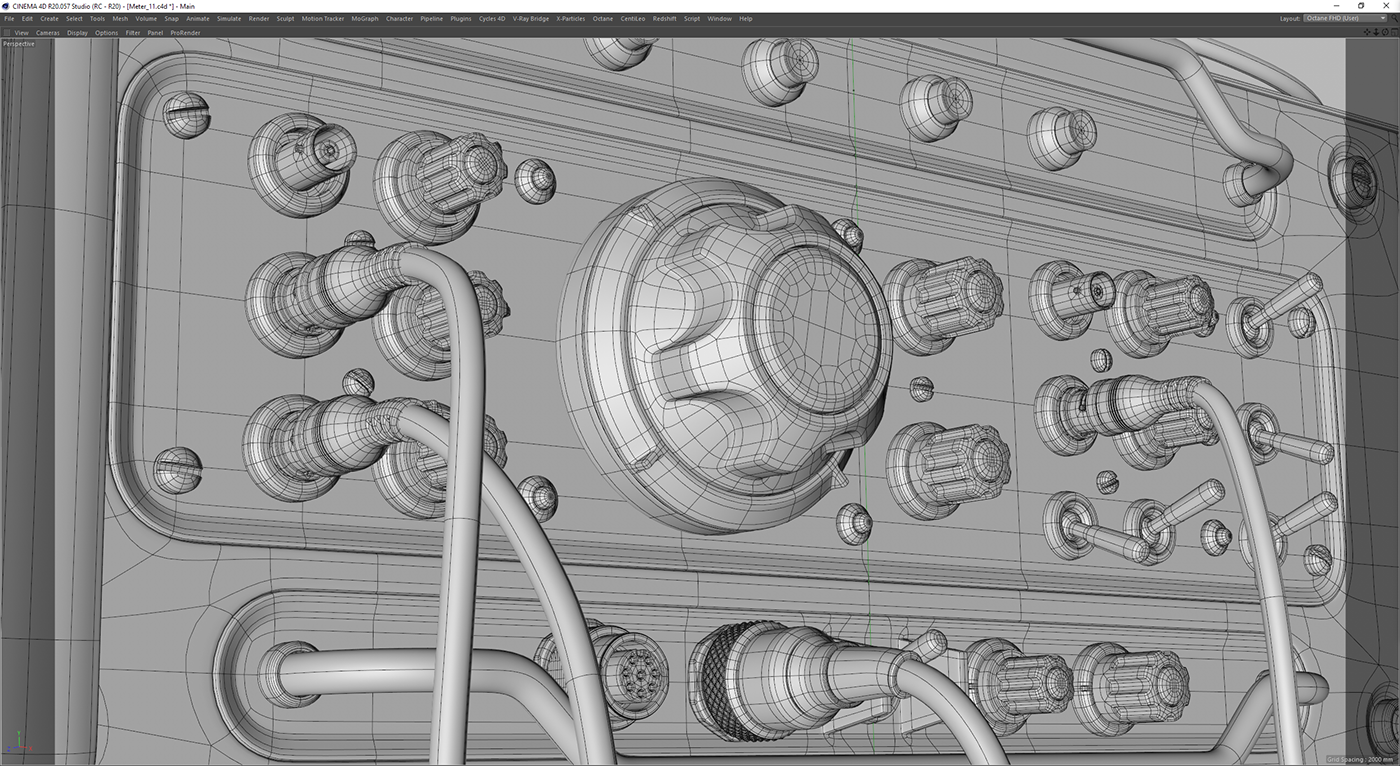
METERS WIRE 4
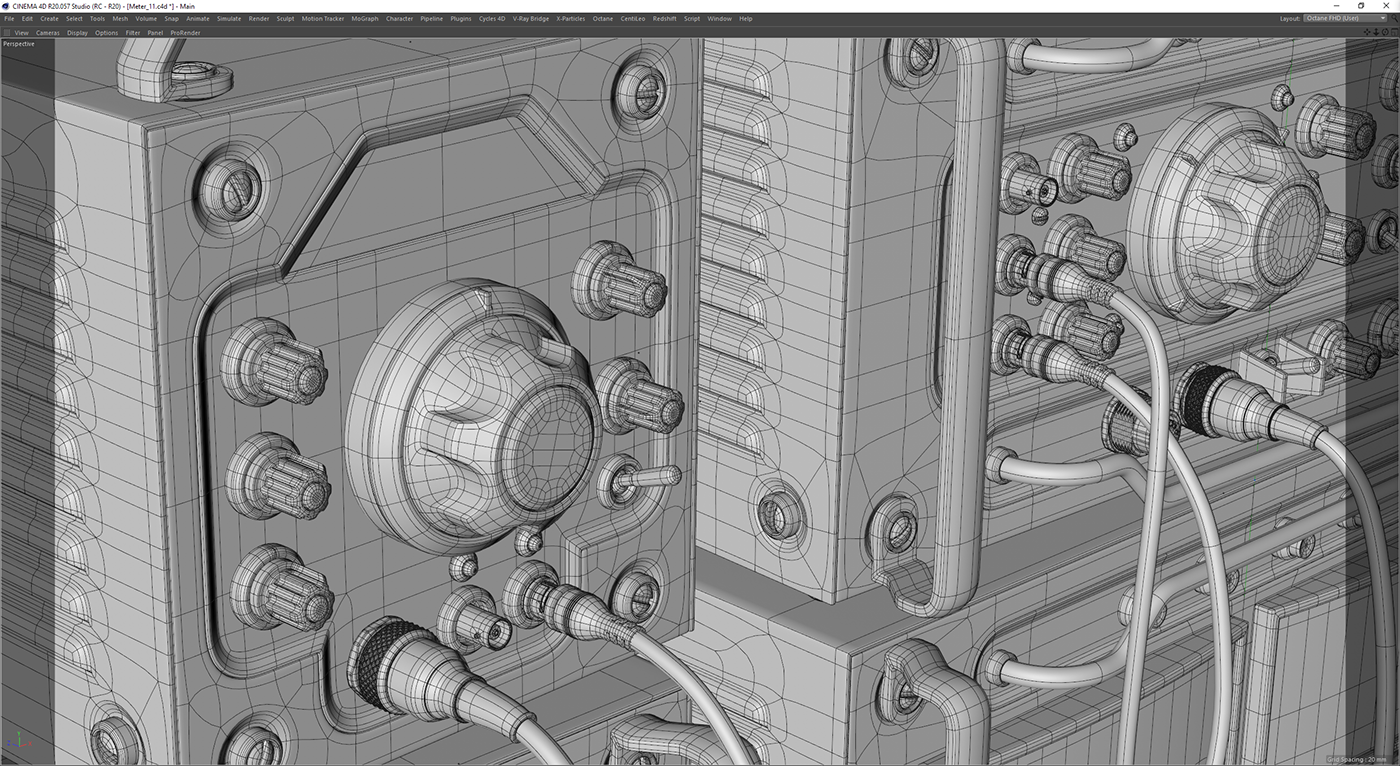
NODES MILITARY PAINT
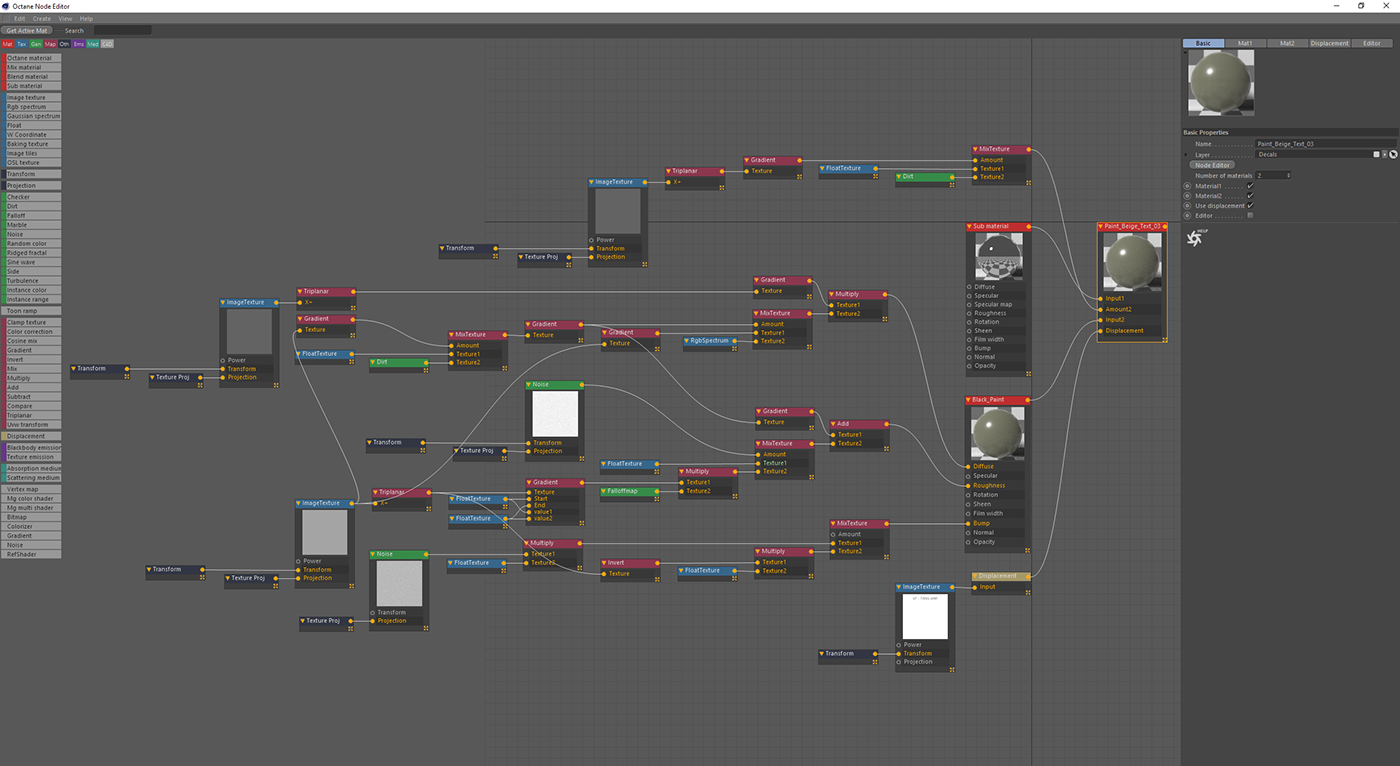
NODES DARK PAINTED METAL
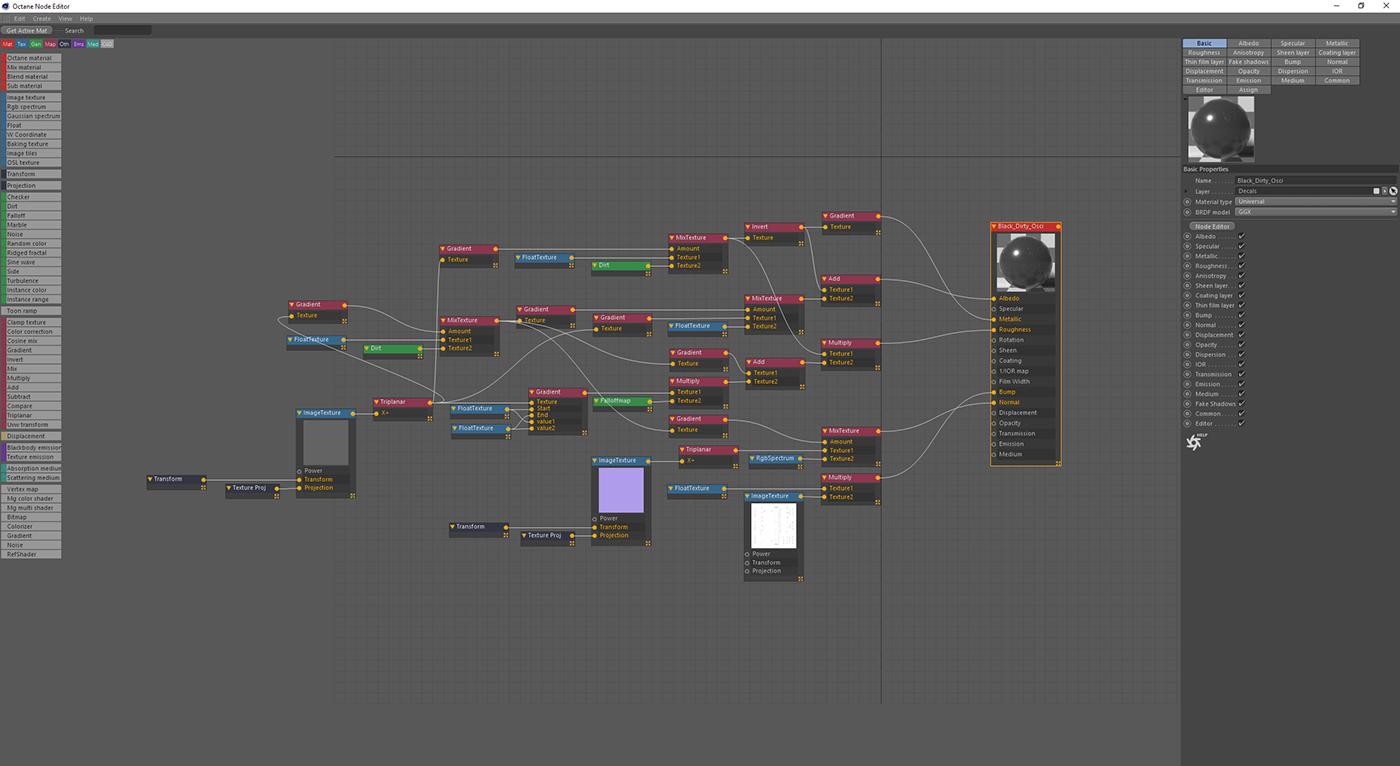
NODES SIDE GRIPS
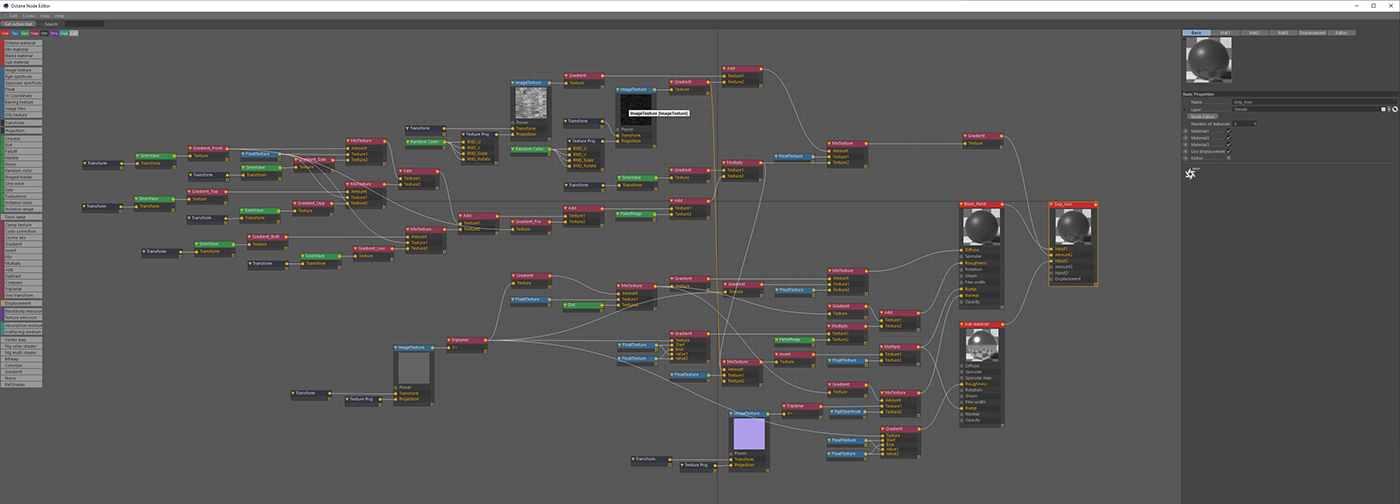
THANK YOU VERY MUCH FOR WATCHING!
For more work visit SILVERWING-VFX








